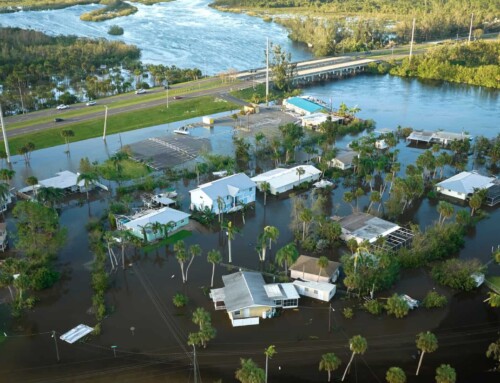The COVID-19 virus, commonly referred to by the umbrella term Coronavirus, has officially been upgraded to a pandemic. While this is cause for great concern, the most important first step is to avoid panicking and take measured steps toward handling and helping control the spread of the virus. This requires a concerted effort from every individual, but also from any organization with the ability to quickly spread information, including businesses.
Employers play an integral role in protecting their employees’ health and limiting the impact on the economy during this crisis. Ideally, every business has an emergency plan already in place, designed to ensure that operations can still run while it is safe to do so and to help limit further spread of the virus. However, if this is not the case, it’s imperative that efforts are made going forward.
Steps Everyone Can Take

One of the most important ways to limit the spread of a virus is to avoid crowded settings. In the absence of removing interaction entirely, there are still a number of basic hygiene and social distancing techniques that can further remove risk.
If possible, encourage employees to work from home, especially if they are sick or showing symptoms of illness. Beyond this, maintaining separation of at least 6 feet can help reduce the spread of germs.
- Remind employees to wash their hands thoroughly with soap and water, and to use hand sanitizer if it’s unavailable. This is especially important after sneezing or coughing.
- Practice social distancing, by avoiding close contact, maintaining a separation of 6 feet or more, and washing their hands after any contact with others.
- Provide customers and the public with tissues and trash receptacles, and with a place to wash or disinfect their hands.
- Maintain a clean work environment, using a cleaner that is safe for human contact.
- Discourage your employees from using other employees’ phones, desks, offices or other work equipment
- Discontinue any unnecessary travel, especially to high density locations, such as major travel hubs.
- Minimize group situations. Communicate through email or phone calls. When meetings are necessary, avoid close contact by keeping a separation of at least 6 feet, where possible, and assure that there is proper ventilation in the meeting room.
- Promote healthy lifestyles, in particular diet, exercise, and quitting smoking.
By far the most important tip is to avoid unnecessary social interaction. If work must be done on site, limit visitors and reconsider any situation where close interaction occurs. This is especially important regarding any contact with individuals at high risk from the virus, which includes both the elderly and very young.
How to Protect Employees
Communication is very important during this pandemic, because it helps prevent further and unnecessary panic. Designate some means of communicating important information regarding the pandemic and someone in charge of maintaining it, through the duration.
Keep everyone updated on any changes to operations, including business hours, office leave policies, means of payment, and transportation concerns. Make sure that your employees know where extra hygiene supplies are located. Monitor public health communications about pandemic flu recommendations and ensure that your employees also have access to that information.
Communicate the availability of medical screening or other employee health resources, including on-site nurses or testing kits for flu-like symptoms. Consider a policy of immediate sick leave or remote work for anyone who may be exhibiting these symptoms.

Develop a Disaster Plan
For some, the COVID-19 crisis has laid bare the lack of infrastructure for handling a wide-spread pandemic. The importance of preparation for emergencies can’t be understated, especially in the face of a fast-spreading virus, which requires a quick response. Going forward, some of these tips may help reduce the impact of another pandemic, and keep businesses operational throughout the event.
- Stay updated on federal, state and local health department pandemic influenza plans. Incorporate appropriate actions from these into your own plans.
- Prepare for operations with a reduced workforce.
- Work with your suppliers to ensure that you can continue to operate and provide services.
- Develop a sick leave policy that does not penalize sick employees, encouraging anyone with flu-like symptoms to stay home to reduce exposure.
- Identify exposure risks to employees, and take preemptive precautionary steps to reduce them. This includes employees who might have contact with flu patients or even the general public.
- Develop or maintain the capacity for employees to work from home.
- Identify positions vital to the operation of the business and prepare for the absence of the individuals in those positions.
- Maintain stores of cleaning supplies and protective equipment if necessary. Keep in mind shelf life when purchasing new products. Provide easy access to the necessary hygienic supplies.
- Organize a dedicated team in charge of emergency communications, so that information can be spread as quickly as possible.
- Address leave, pay, transportation, travel, childcare, absence and other human resource issues.
- Work with your insurance companies, and state and local health agencies to provide information to employees and customers about medical care in the event of a pandemic.
One of the primary goals of your disaster plan should be to protect and support your employees and customers, as well as the general public. This is why communication is so important. During a pandemic, misinformation can be the difference between life and death and helping to reduce any unnecessary stressors for employees and customers can alleviate that pressure, allowing everyone to focus on protecting themselves and their families. Employers who can provide opportunities for support and counseling should do so.
For information on the current pandemic and on disaster prevention, stay updated with local and national news, as well checking the CDC page on pandemic resources here and the OSHA homepage here.





